A comprehensive computational model of animal biosonar signal processing
- PMID: 33596199
- PMCID: PMC7888678
- DOI: 10.1371/journal.pcbi.1008677
A comprehensive computational model of animal biosonar signal processing
Abstract
Computational models of animal biosonar seek to identify critical aspects of echo processing responsible for the superior, real-time performance of echolocating bats and dolphins in target tracking and clutter rejection. The Spectrogram Correlation and Transformation (SCAT) model replicates aspects of biosonar imaging in both species by processing wideband biosonar sounds and echoes with auditory mechanisms identified from experiments with bats. The model acquires broadband biosonar broadcasts and echoes, represents them as time-frequency spectrograms using parallel bandpass filters, translates the filtered signals into ten parallel amplitude threshold levels, and then operates on the resulting time-of-occurrence values at each frequency to estimate overall echo range delay. It uses the structure of the echo spectrum by depicting it as a series of local frequency nulls arranged regularly along the frequency axis of the spectrograms after dechirping them relative to the broadcast. Computations take place entirely on the timing of threshold-crossing events for each echo relative to threshold-events for the broadcast. Threshold-crossing times take into account amplitude-latency trading, a physiological feature absent from conventional digital signal processing. Amplitude-latency trading transposes the profile of amplitudes across frequencies into a profile of time-registrations across frequencies. Target shape is extracted from the spacing of the object's individual acoustic reflecting points, or glints, using the mutual interference pattern of peaks and nulls in the echo spectrum. These are merged with the overall range-delay estimate to produce a delay-based reconstruction of the object's distance as well as its glints. Clutter echoes indiscriminately activate multiple parts in the null-detecting system, which then produces the equivalent glint-delay spacings in images, thus blurring the overall echo-delay estimates by adding spurious glint delays to the image. Blurring acts as an anticorrelation process that rejects clutter intrusion into perceptions.
Conflict of interest statement
The authors have declared that no competing interests exist.
Figures
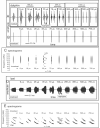

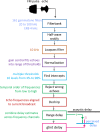







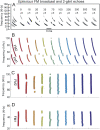


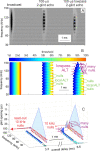

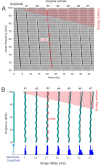



Similar articles
-
How frequency hopping suppresses pulse-echo ambiguity in bat biosonar.Proc Natl Acad Sci U S A. 2020 Jul 21;117(29):17288-17295. doi: 10.1073/pnas.2001105117. Epub 2020 Jul 6. Proc Natl Acad Sci U S A. 2020. PMID: 32632013 Free PMC article.
-
A computational model of echo processing and acoustic imaging in frequency-modulated echolocating bats: the spectrogram correlation and transformation receiver.J Acoust Soc Am. 1993 Nov;94(5):2691-712. doi: 10.1121/1.407353. J Acoust Soc Am. 1993. PMID: 8270744
-
Convergence of temporal and spectral information into acoustic images of complex sonar targets perceived by the echolocating bat, Eptesicus fuscus.J Comp Physiol A. 1990 Feb;166(4):449-70. doi: 10.1007/BF00192016. J Comp Physiol A. 1990. PMID: 2332837
-
Temporal binding of neural responses for focused attention in biosonar.J Exp Biol. 2014 Aug 15;217(Pt 16):2834-43. doi: 10.1242/jeb.104380. J Exp Biol. 2014. PMID: 25122915 Free PMC article. Review.
-
A view of the world through the bat's ear: the formation of acoustic images in echolocation.Cognition. 1989 Nov;33(1-2):155-99. doi: 10.1016/0010-0277(89)90009-7. Cognition. 1989. PMID: 2691182 Review.
Cited by
-
Connexin36 RNA Expression in the Cochlear Nucleus of the Echolocating Bat, Eptesicus fuscus.J Assoc Res Otolaryngol. 2023 Jun;24(3):281-290. doi: 10.1007/s10162-023-00898-y. Epub 2023 May 30. J Assoc Res Otolaryngol. 2023. PMID: 37253961 Free PMC article.
-
Most favorable stimulation duration in the sensorimotor cortex for fNIRS-based BCI.Biomed Opt Express. 2021 Sep 2;12(10):5939-5954. doi: 10.1364/BOE.434936. eCollection 2021 Oct 1. Biomed Opt Express. 2021. PMID: 34745714 Free PMC article.
-
Faster Repetition Rate Sharpens the Cortical Representation of Echo Streams in Echolocating Bats.eNeuro. 2022 Feb 9;9(1):ENEURO.0410-21.2021. doi: 10.1523/ENEURO.0410-21.2021. Print 2022 Jan-Feb. eNeuro. 2022. PMID: 34903526 Free PMC article.
-
Bat echolocation signals based on the time-varying autoregressive method.Front Zool. 2025 Jul 30;22(1):17. doi: 10.1186/s12983-025-00573-3. Front Zool. 2025. PMID: 40739250 Free PMC article.
-
Analysis of echolocation behavior of bats in "echo space" using acoustic simulation.BMC Biol. 2022 Mar 14;20(1):59. doi: 10.1186/s12915-022-01253-y. BMC Biol. 2022. PMID: 35282831 Free PMC article.
References
-
- Griffin DR. Listening in the dark. New Haven: Yale University Press; 1958.
-
- Neuweiler G. Biology of bats. Oxford: Oxford University Press; 2000.
-
- Au WWL. The sonar of dolphins. New York: Springer; 1993.
-
- Thomas JA, Moss CF, Vater M, editors. Echolocation in bats and dolphins. Chicago: Univ. of Chicago Press; 2004.
-
- Surlykke A, Nachtigall PE, Fay RR, Popper AN, editors. Biosonar. New York: Springer; 2014.
Publication types
MeSH terms
LinkOut - more resources
Full Text Sources
Other Literature Sources

